From drum circles to bands that feature hand percussion, interest in world percussion instruments has never been greater. In this buying guide we will familiarize you with the many instruments available today, their history, and the music genres in which they’re found.
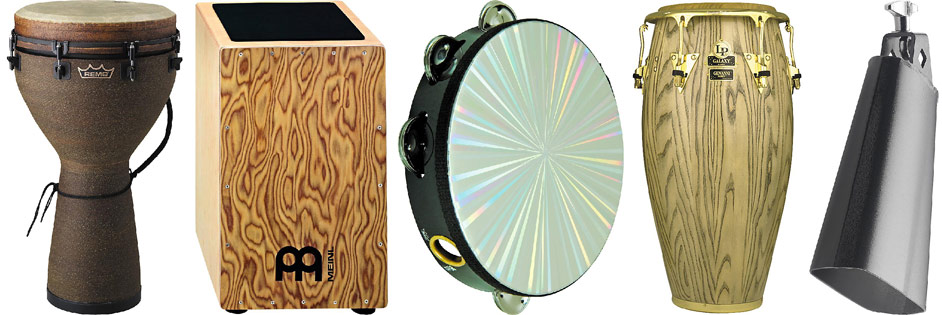
Table of Contents
Introduction
African Percussion
Timbales, Congas, and Beyond: Afro-Cuban Drums
Middle Eastern Percussion
Steel Pan Drums for Vibrant Caribbean Sounds
Celtic Percussion
Indian Percussion
Brazilian and Samba Percussion
Effects & Hand Percussion
Tuned Percussion
Drum Circles and Wellness Drumming
Shake Well & Enjoy
Introduction
Percussion instruments have existed practically since the dawn of human culture, with drums unearthed that date back to 6,000 B.C. Beyond their use in music, many cultures see percussion instruments as having great symbolism and healing power, making use of them in sacred ceremonies and rituals.
Percussion instruments can be classified as tuned or untuned. Untuned percussion include most hand drums, shakers, and other instruments that produce sounds and effects of undefined pitch. Tuned percussion instruments include xylophones, marimbas, steel pan drums, and other instruments with definite tonal ranges.
Just about every culture has evolved its own distinct percussive traditions. With growing global trade and the spreading popularity of the world music genre, a greater variety of authentic, high-quality percussion instruments are available than ever before.
Explore the huge range of world percussion instruments at Musician’s Friend.
African Percussion
Many of the most vibrant percussion traditions trace their roots back to Africa, and percussion instruments are an integral part of today’s African cultures. Polyrhythmic music is the norm in Africa with many different percussion instruments being played together in complex, ever-shifting relationships of rhythms and counter-rhythms. The “drum conversations” that occur in modern drum circles draw on these same dynamics.
Djembe
The djembe, a large goblet-shaped drum, is thought to have originated among the Mandinka people of West Africa. It has gained great popularity in the West recently, as it’s a very dynamic drum capable of a wide range of tones from deep thumping bass to resoundingly bright, high slaps. The loud volume of the djembe allows it to cut through loud mixes, and it is also easy to haul around.
Traditional djembes are generally carved of wood and are fitted with a goatskin head, while modern djembes may use synthetic materials for both the body and head. Djembes are usually played with the hands, although they’re sometimes played with one hand and one stick.
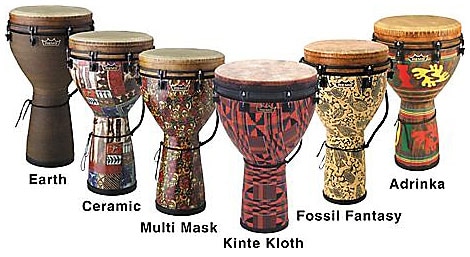
The Remo Designer Series Key Tuned Djembe comes in a range of sizes and exciting exotic finishes. The synthetic head and tuning system means you can deal with any weather or musical setting while enjoying its robust and broad sound palette.
Djun Djun
The djun djun, sometimes called the dunun or doundoun, is a non-specific name for a large group of West African rope-tuned drums. They come in a range of sizes, and are commonly played alongside the djembe. They have a skin or synthetic head at both ends, and are played with a stick, mallet, or even a bell.
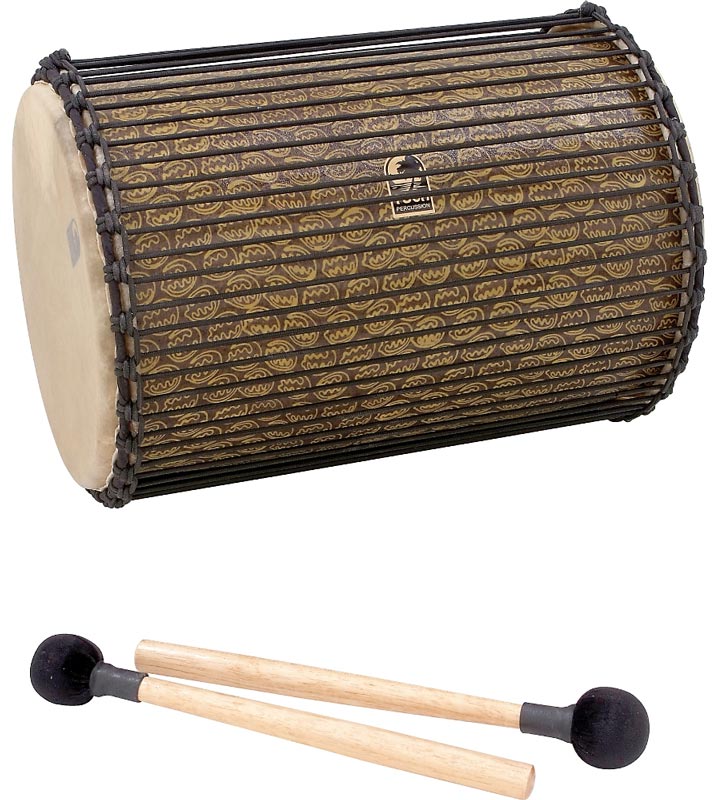
The Toca Freestyle Djun Djun has a synthetic shell that doesn’t react to climate change, traditional calfskin heads for deep, throaty tone, and non-stretch tensioning rope that keeps tuning consistent.
Tama
The talking drum, or tama, is a drum whose pitch can be changed by squeezing the vertical strings that run alongside the drum’s body. The drum is played with one hand and a special curved stick, and is said to "talk" in the hands of a skilled player.
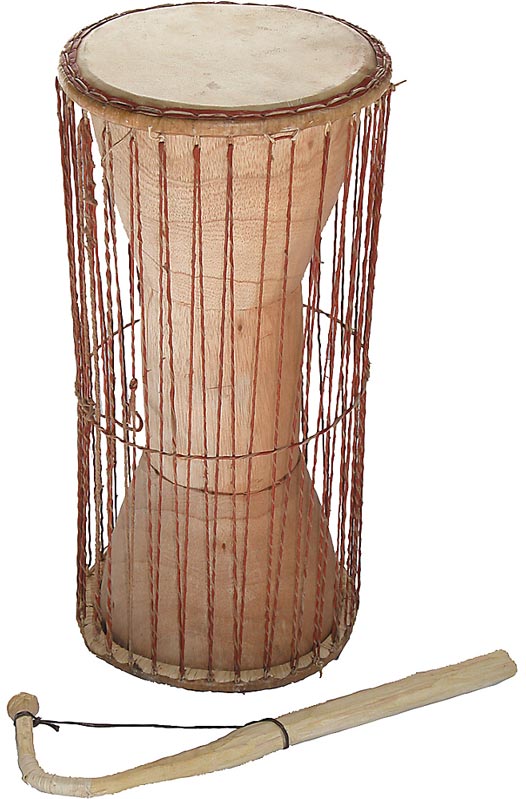
The Overseas Connection Ghana Talking Drum has authentic skin drum heads and rope binding that alters the pitch when squeezed.
Mbira
The thumb piano, often called the "mbira" or "kalimba", is over 3000 years old. It is a melodic instrument that uses "keys" made of flattened nails or other metal with a gourd or carved wooden body. In Africa they range in size from deep-toned “baritone” kalimbas mounted in calabash shells used for increasing projection to smaller hand-held types. Some have small metal resonators around the individual keys to create buzzing overtones. Most can be tuned by adjusting the portion of the key that extends under a bridge-like wood or metal bar. Most mbiras are tuned in pentatonic scales.
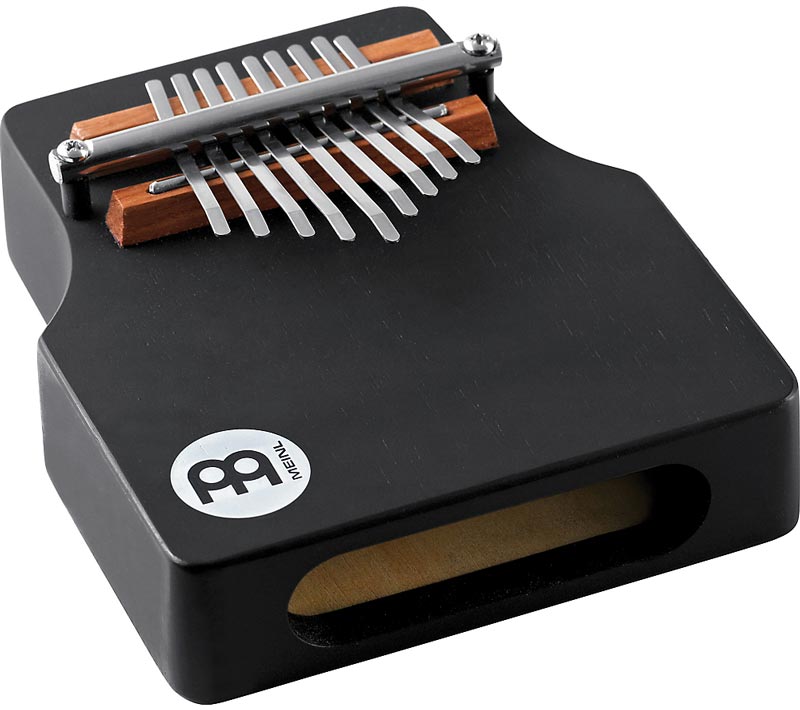
The Meinl Medium Kalimba is designed so the chrome-plated steel keys can be easily tuned, and a large hole in the front of the sound chamber helps project its sound.
Udu
The Udu is a clay pot-shaped instrument native to Nigeria with a hole in the side. Playing the drum’s clay surface with one hand while moving the other hand over the hole yields an astonishing range of sounds and effects. A variation on this drum called the Ibo is made with a variety of different materials.
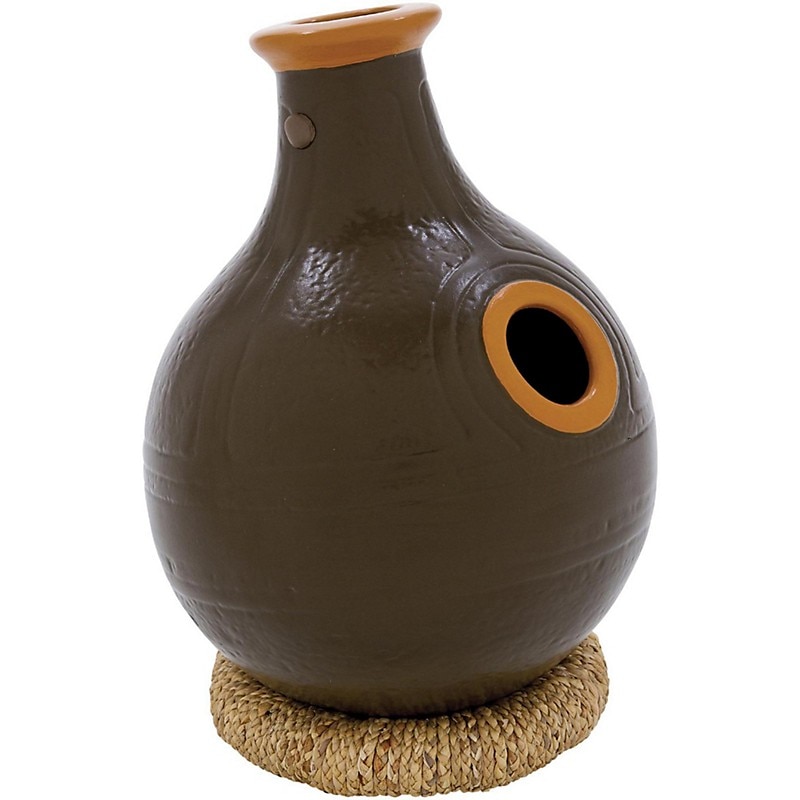
The handcrafted LP LP1400 Claytone 2 Udu Drum can produce an amazing array of tones. The included sisal base pad increases the drum’s resonance.
Slit Drum
The slit drum, also known as a log or tongue drum, is a wooden drum with cut-out surfaces that produce different tones when struck with mallets. These drums have a warm, resonant sound with great projection. The tongues or slits are cut so that the drum produces a pleasing scale.
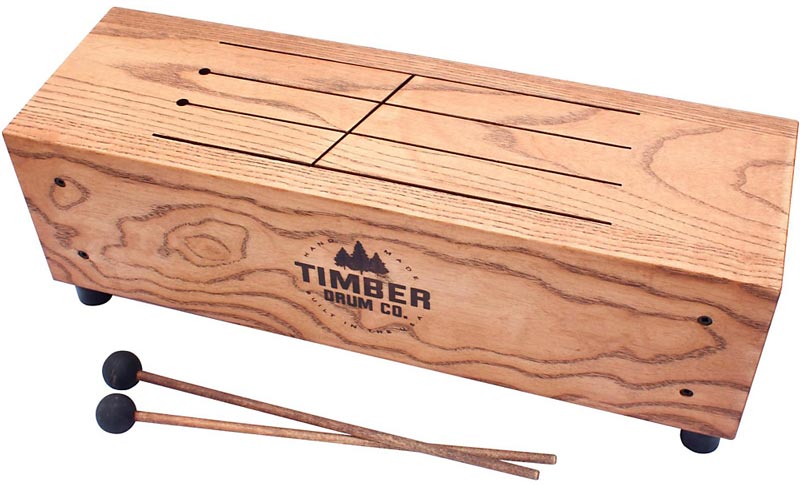
The Timber Drum Company Slit Drum generates mellow and warm tones thanks to its beautiful hardwood construction combined with the included soft mallets. The tongue layout makes it hard to play a “bad note.”
Gonkogwe Bell
The Gonkogwe bell from Ghana is a large, two-toned bell that’s played with a metal or wooden stick. This bell is essential to West African Ewe drumming and helps define the central beat in the same way claves provide the pulse in Afro-Cuban rhythms.
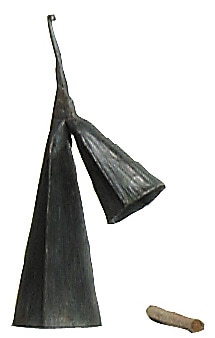
The Overseas Connection Ghana Double Gonkogwe Bell produces two bright tones that help anchor the pulse in polyrhthmic drum circles.
Cuica
The Cuica has African origins, where it was claimed to be effective as a call for attracting male lions. This higher-pitched drum is used today in Brazilian samba music and Carnaval parades. Its shell may be made of wood, metal, or synthetic material, and has a single skin head. A thin bamboo rod is attached perpendicularly to the head on the inside of the drum. It is played by rubbing the stick with moistened fingers or a cloth held with one hand while applying pressure to the drum head with the other to alter pitches.
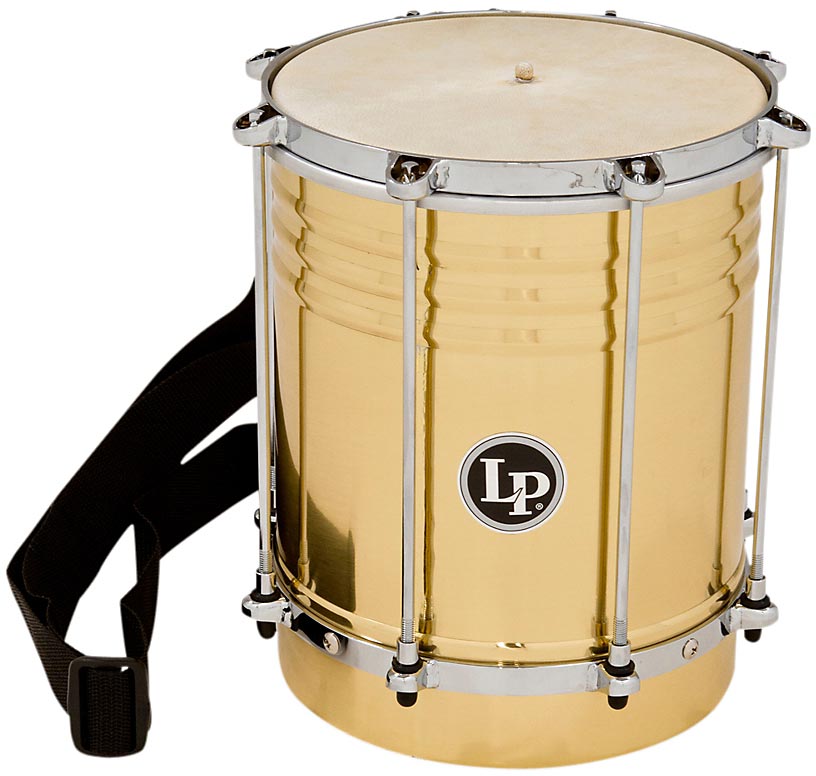
The combination of a brass shell with goatskin head and a modern tuning system allows the LP Brass Cuica to produce a range of squealing, roaring sounds that just might draw a lion out of the bush!
Browse the huge selection Brazilian and samba percussion instruments at Musician’s Friend.
Timbales, Congas, and Beyond: Afro-Cuban Drums
Cuban music is a mix of Spanish and African influences, and the elemental rhythms of those cultures are expressed in the many drums used in this genre.
Congas
Congas are probably the best-known Latin hand drums. Of Afro-Cuban origin, they were originally constructed using wood staves, and were outfitted with calfskin heads. Today congas may use shells made of either wood or fiberglass, with either skin or synthetic heads. If you play with a heavily amplified band and need a lot of volume, you should consider congas made with synthetic or fiberglass shells for their louder volume and greater projection. Congas made with wood shells have a slightly mellower, rounder tone.
While they are often sold individually or sometimes in pairs, a full set of congas usually consists of three drums: the tumba is the largest drum; followed by the conga; while the quinto is the smallest drum (although in some sets it’s the same size as the conga) and is tuned the highest. Some sets also feature yet a smaller conga tuned to a very high pitch, called a super quinto or requinto.
If you play out often with your congas, you’ll want to invest in conga gig bags or cases to keep your drums looking and sounding their best. Also, be sure to order a stand if the congas you buy don’t include them.
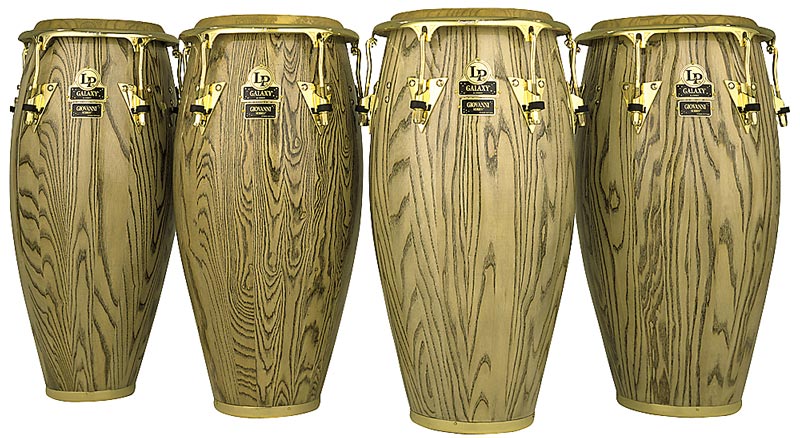
The LP Galaxy Giovanni Series Congas come in four different sizes, each with renowned LP Comfort Curve II rims and rawhide heads for powerful, classic salsa tone.
Bongos
Also from Cuba come the bongos, a pair of small hand drums traditionally played while seated and held between the legs. Bongos are very popular and are used both as a lead instrument and for solo performances. Traditionally made with wood shells and calfskin heads, you’ll find models with both synthetic shells and heads today.
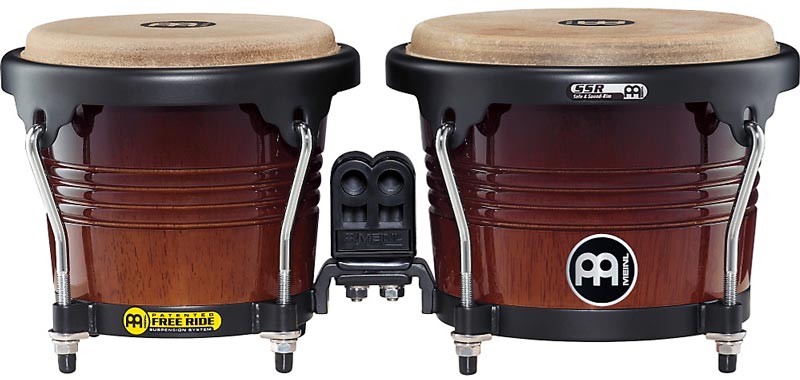
The wallet-friendly Meinl Free Ride Bongos have an excellent tuning and head-mounting system that allows them to be tuned very high for great tonal definition in group settings.
Watch the Free Ride Bongos in action.
Timbales
Timbales have their origins in the iron vessels used to ship sugar cane juice. Modern timbales are usually made from steel or brass, and their intense cutting tone provides an ideal solo voice for Latin, rock, and fusion styles. Steady accompaniment patterns are often played on the side of the metal shell, or cascara, with the free hand providing accents on the drum heads. Traditionally a wood block and a cowbell or two are mounted on the timbale stand for additional accents.
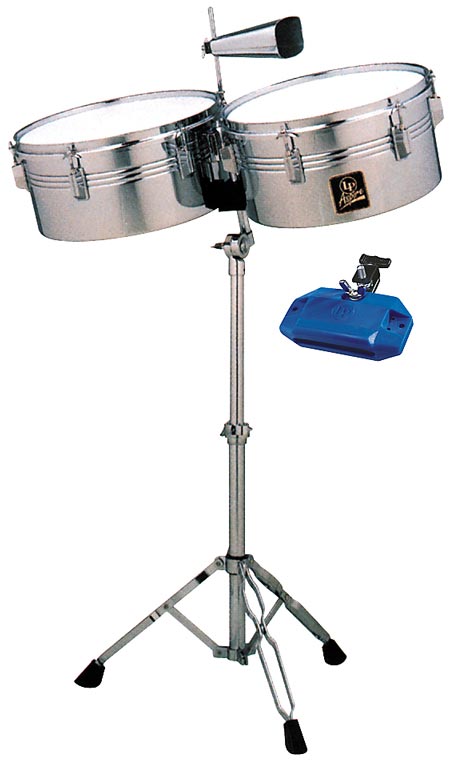
The very affordable LP Aspire Timbale Set has bright-sounding shells and comes with a high-pitched Jam Block for exciting accents and effects.
Cajon
The cajon is a wood percussion box that is believed to have its origins in Peru, where African slaves substituted wooden shipping crates for the native drums they had played in their homeland. The cajon also developed in Cuba, where fish crates and dresser drawers were used as percussion instruments. In Spain the cajon is used to accompany flamenco, pop, and fusion music. The cajon is played by sitting on it and striking the front surface. The back has a hole cut in it for resonance, and the front striking surface is loosened around the edges to permit slap tones when played near the edge. Some modern versions incorporate a snare that adds a buzz to the cajon’s sound.
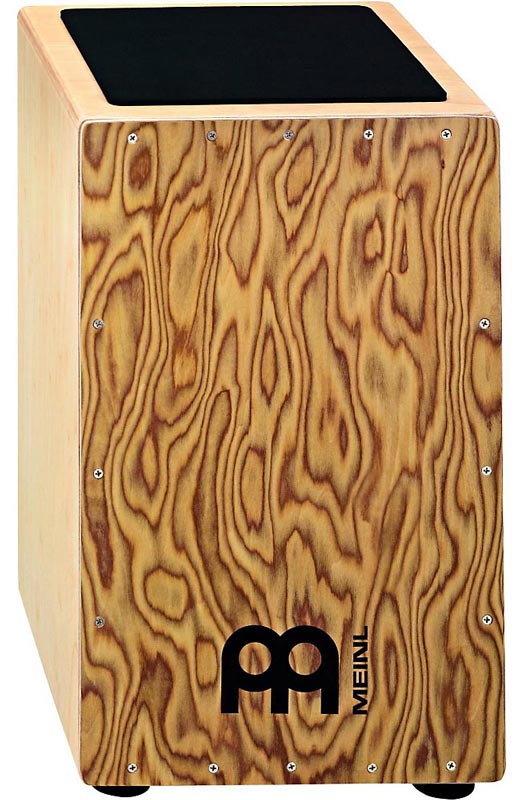
One of our most popular percussion instruments, the beautifully finished Meinl Siam Oak String Cajon has a great range of sounds including a unique sizzle effect for dazzling solos.
Bata
The Bata is a double-headed hourglass-shaped drum, with one end larger than the other. Of Nigerian origins, it is now popular in Cuba and Puerto Rico. It is often played in sets of three. Bata drums have a strong association with religious ceremonies, and are also found in Cuban folk and pop music.
Middle Eastern Percussion
Want to play the complex cadences of Middle Eastern music? The sinuous rhythms of the Middle East and North Africa turn up in all kinds of genres these days including world music and dance pop sounds Read on to learn about the many percussion instruments you can use to create an authentic sound.
Doumbek
The doumbek (also variously spelled and called the dombek, dumbak, darbuka, derbeki, tablah, or tombek) is the most popular Middle Eastern drum. Characteristically played in a horizontal position across the lap with the hands and fingers, this goblet-shaped drum produces a wide dynamic range of tones.
The doumbek comes in an astonishing range of shapes and styles. Egyptian cast-metal doumbeks usually have tunable Mylar heads. They are capable of higher volumes that are audible in loud mixes, with rounded edges on the drumheads that let you play loudly with comfort. Turkish doumbeks are usually made of thinner metal with tuneable heads. Turkish doumbeks have a sharply-defined rim that gives it a resonant, metallic sound. Some Turkish doumbeks have cymbals or jingles inside for added flavor.
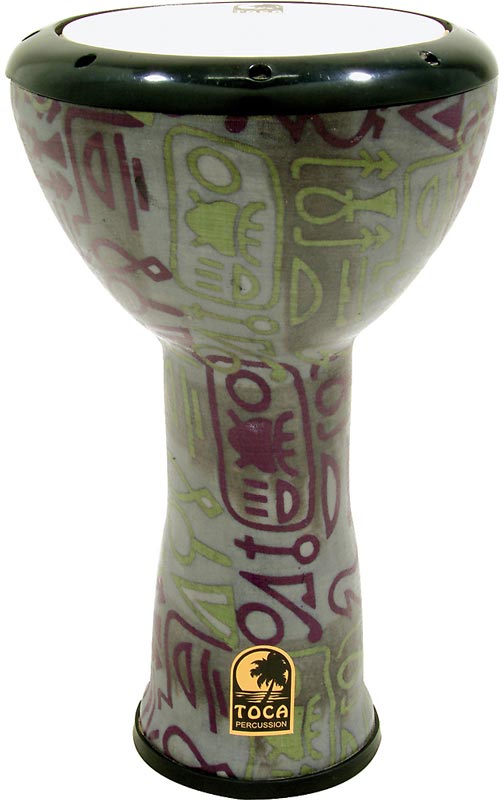
The Toca Freestyle Doumbek has a comfortable curved rim, beautifully decorated shell, and produces fat bass notes from the center of the head and sharp trebles from the edge.
Tar
The tar, a type of frame drum, is one of the most ancient forms of drums, depicted in images from Turkish shrines that date to 6000 BC. These drums traditionally have deep spiritual and religious significance. A frame drum is shallow with a diameter bigger than its depth. Goatskin is commonly used for the head, though some have synthetic heads. The drum is held upright in one hand and played with the fingers of that hand, as well as the other whole hand and fingers.
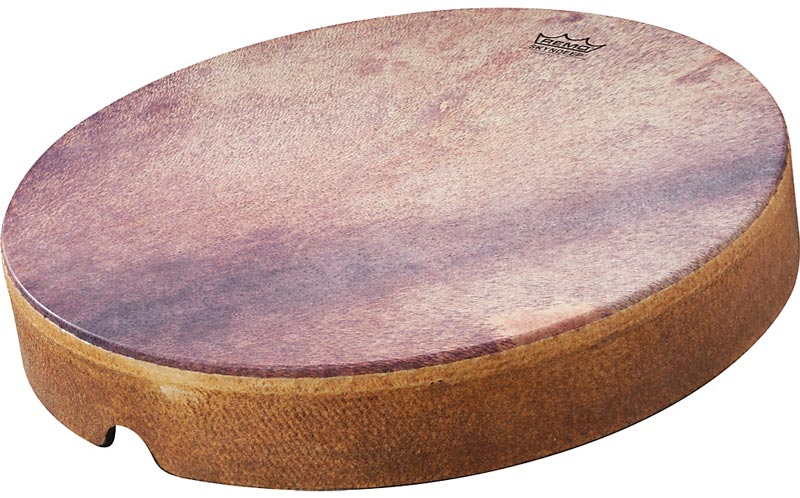
The Remo Tar Frame Drum has a Skyndeep synthetic head that produces controlled overtones while being impervious to changes in humidity.
Finger Cymbals
Finger cymbals, also known as zils, zills, or sagat, are round and bell-shaped. These small brass cymbals are worn in pairs on each hand, and are struck together with the fingers. They’re often worn by bellydancers.
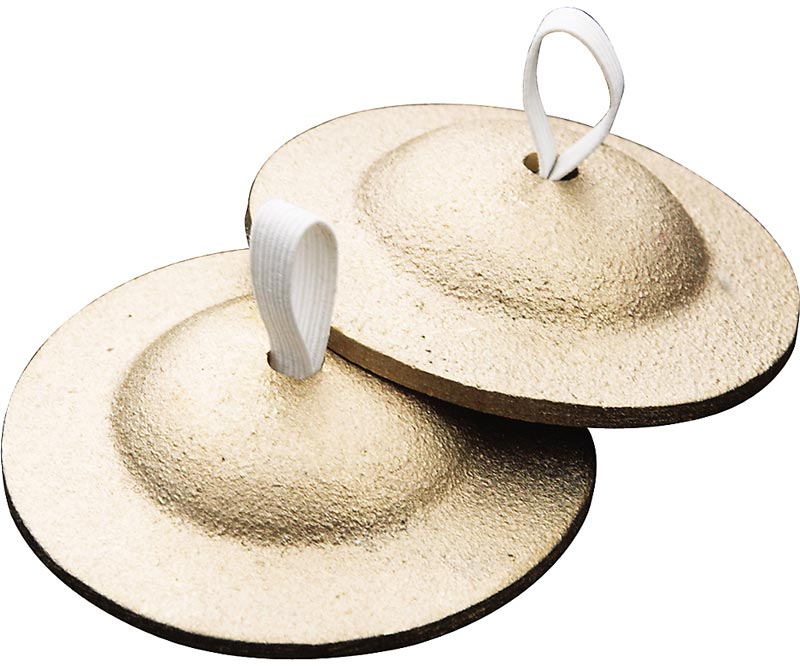
Zildjian Finger Cymbals are made from an ancient alloy formula that produces the ringing chime sounds associated with bellydance performance.
Tambourine
Though we’ve placed the tambourine in the Middle Eastern Percussion section, this is one instrument that’s truly global in its reach. The wood-rimmed tambourine with jingles most of us are familiar with was originally used in the U.S. to accompany gospel music. Today tambourines are used in musical styles from rock to classical and every stop along the way.
Essentially a shallow drum that comes with or without a head, it usually has jingles (referred to as zils in their Middle-Eastern forms) built into its rim.
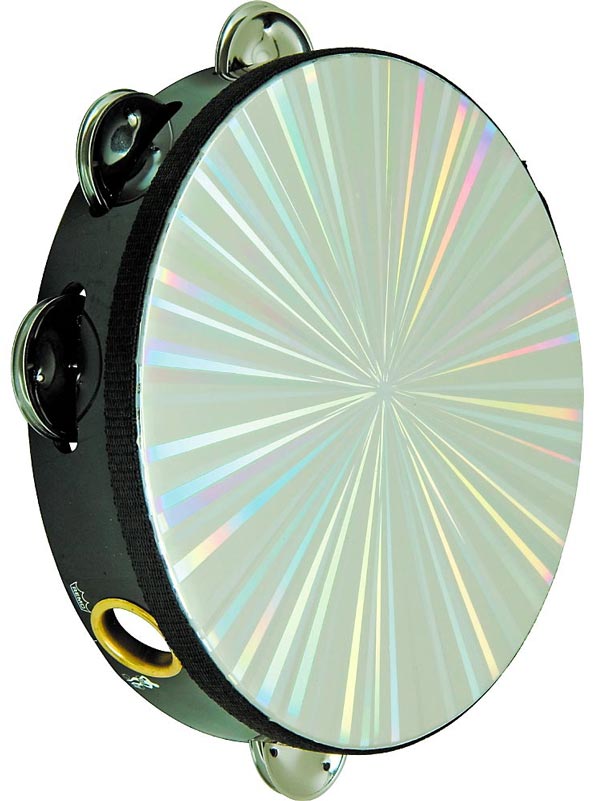
The Remo Radiant Series Tambourine comes in two sizes and has a flashy head that adds visual excitement to the bright jangle of its brass jingles.
Steel Pan Drums for Vibrant Caribbean Sounds
While drumming traditions of the Caribbean area incorporate congas, cowbells, and many other instruments used in Afro-Cuban music, the islands of this part of the world have their own unique instruments as well.
Steel Pans/Steel Drums
Steel pans (also called steel drums), have a bright, sunny sound that conjures up visions of the tropics. Hailing from the island of Trinidad, pans were developed when it was discovered that the dented section of a metal barrel head produced a distinct musical tone. The design was enhanced when players hammered sections of the metal into distinct areas to create different tunings and scales. Eventually, pan players formed orchestrated bands. Today, these bands take part in large musical competitions that are a fixture during carnival season on the islands of Trinidad and Tobago.
Smaller steel drums are pitched to specific keys, such as C or G and are tuned to diatonic or pentatonic scales. Large chromatic pans include the full range of notes. Beyond their use in traditional Caribbean music, steel drums have also been adopted for use in jazz because of their tunability.
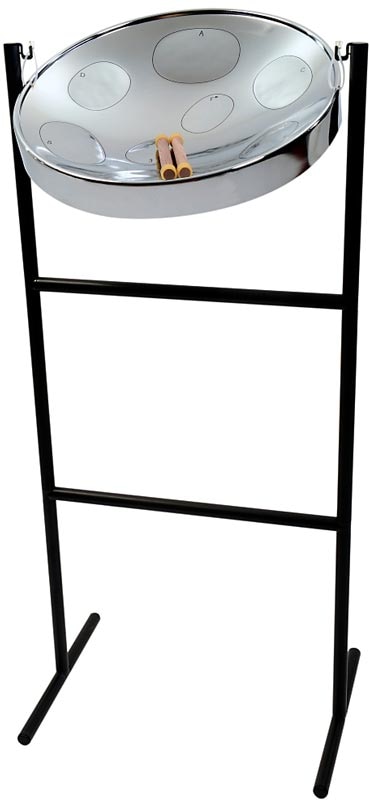
Fun to play, each note is clearly marked making the Panyard Jumble Jam Deluxe Steel Drum Kit a great way to teach notation.
Celtic Percussion
Percussion is essential to performing the tempos found in the traditional music of the six nations (Brittany, Cornwall, Ireland, the Isle of Man, Scotland, and Wales) that comprise the Celtic lands.
Bodhran
The bodhran most likely evolved from a combination of the tambourine and various rural tools. It became popular with the rise of Irish music in the 1960s and 1970s. It is a frame drum with an integrated handle. The player holds the bodhran by the handle with one hand while the other hand strikes the drum’s head with a double-headed stick.
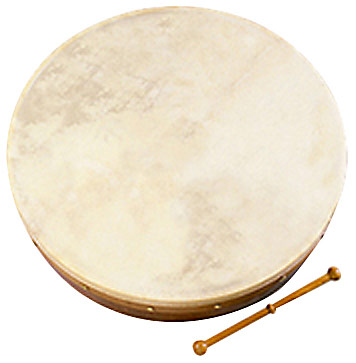
The handcrafted Walton Music Bodhran will help you keep the Celtic beat.
Bones
Bones are two pairs of curved pieces of bone or wood that are held in each hand and struck together. This folk hand instrument is found in the music of many different cultures, but the distinctive Irish tradition is for the bones to be played with only one hand.
Indian Percussion
Whether you like Bollywood tunes, wild Bhangra beats, or classical Hindustani music, the sounds of India are captivating. We can help you keep the beat!
Tabla
Indian classical, film, and even modern dance music uses a large range of hand drums, the best known of which are tabla drums. A tabla set consists of two drums, respectively called a tabla and bayan. The tabla, or dayan (literally right) drum is the smaller and higher-pitched of the two and is made of wood. The larger bayan (literally left) drum, is usually made of copper or brass.
The heads of both drums are made of goatskin topped with a black patch made of rice paste, iron oxide, and other trace ingredients, giving the tablas their characteristic sound. Tablas are played with sophisticated finger and hand techniques.
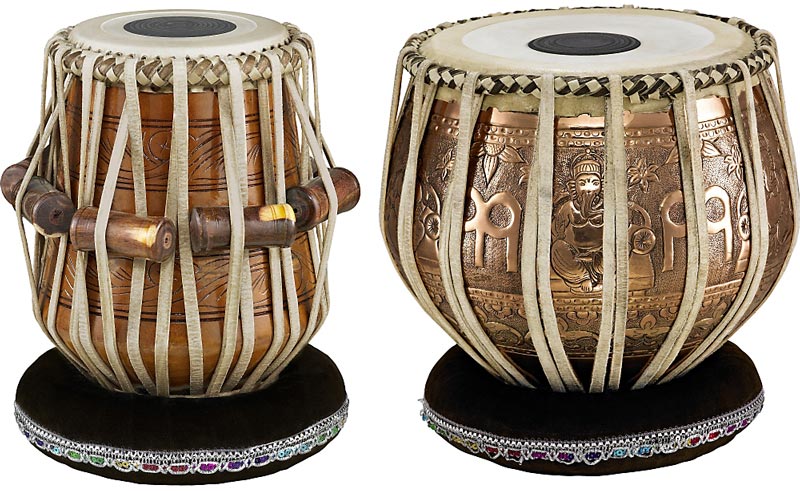
The Meinl Professional Tabla Set will give you authentic sounds from thanks to traditional materials that are expertly crafted.
Muthu Kumar performs a solo on the Meinl Professional Tabla set.
Kanjira
The Kanjira is a Southern Indian drum that is similar to a tambourine. It is made of wood with a single drum head (now synthetic, historically lizard skin), and may have jingles built into the frame. In the hands of skilled player the Kanjira is capable of very complex, fast rhythm patterns.
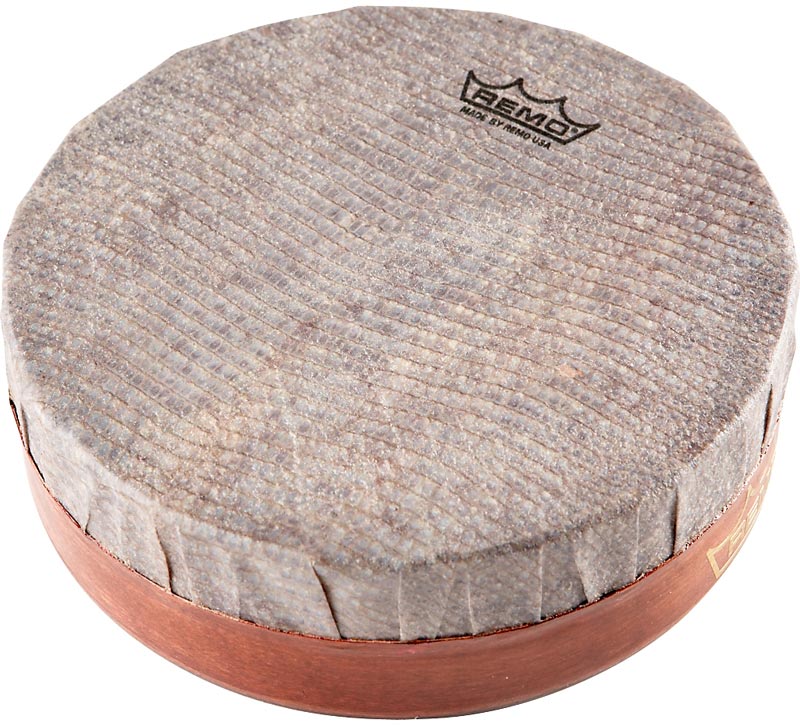
The Remo Kanjira has a 7” ecologically friendly Skyndeep head that mimics the look and sound of lizard skin.
Some of the many other Indian drums include the pakhawaj, mridang, khol, and ghatam.
You can explore the huge range of unique hand drums at Musician’s Friend.
Brazilian and Samba Percussion
Music is a huge part of Brazilian culture and plays an integral part of the yearly carnaval celebration. Baterias are carnaval bands that perform often in parades or other dynamic outdoor environments.
Surdo
The Surdo drum provides the bass-note pulse in samba bands. Multiple tuning options allow it to play different parts in creating a unique overall sound. It is made of wood, steel, or aluminum, and has two heads. The bottom head is usually resonant and is not played directly. Surdos are sometimes played on a stand similarly to a floor tom, or may be worn on a strap and played in the horizontal position.
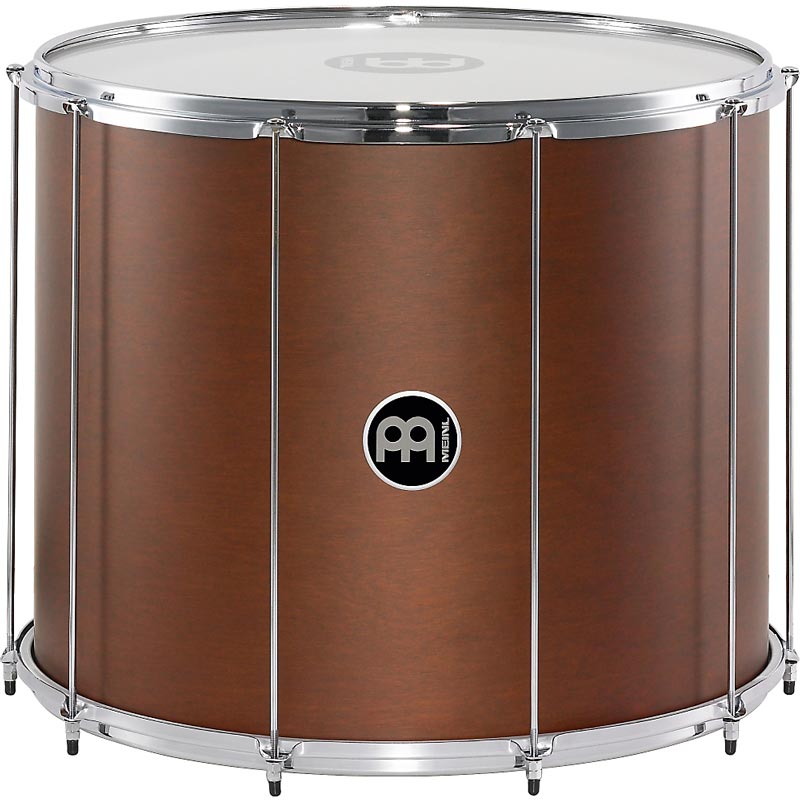
The Meinl Bahia Wood Surdo has a lightweight six-ply hardwood body designed to be comfortably worn while delivering the surdo’s traditional deep pulse notes. The synthetic beater head is easily replaced.
Repinique
Similar to the tom tom or a marching band tenor drum, the repinique is a metal drum has two mylar heads, and is typically tuned quite high. It has been an essential part of samba percussion since the 1950s.
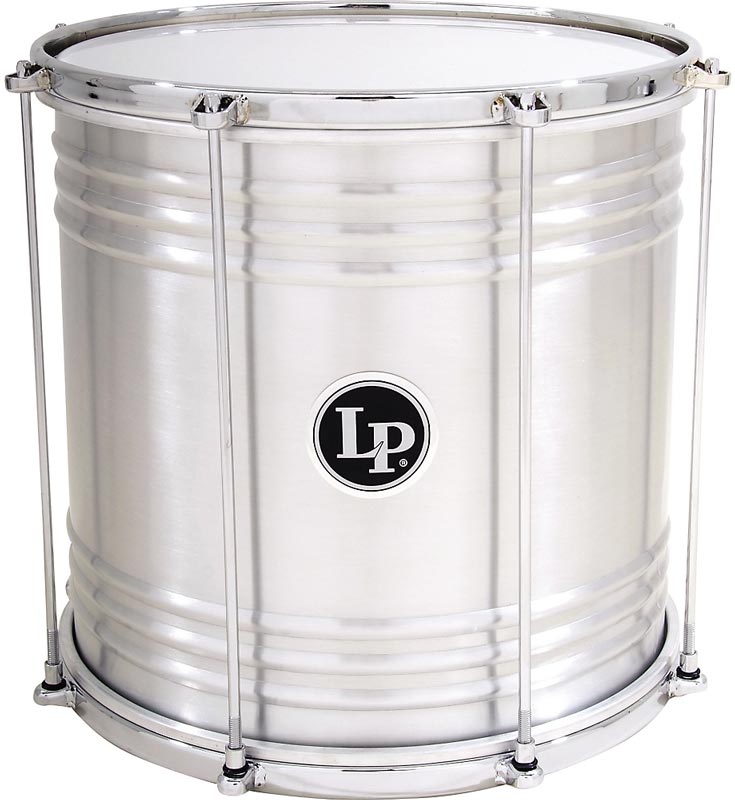
The LP Aluminum Repinque provides the bright upper voice in samba ensembles and has a special-radius top and tuning system that protects your hands.
Pandeiro
The pandeiro is a hand frame drum with metal jingles—it’s the Brazilian take on the tambourine. Commonly used in samba music, it evolved from a Spanish instrument that in turn was based on North African percussion.
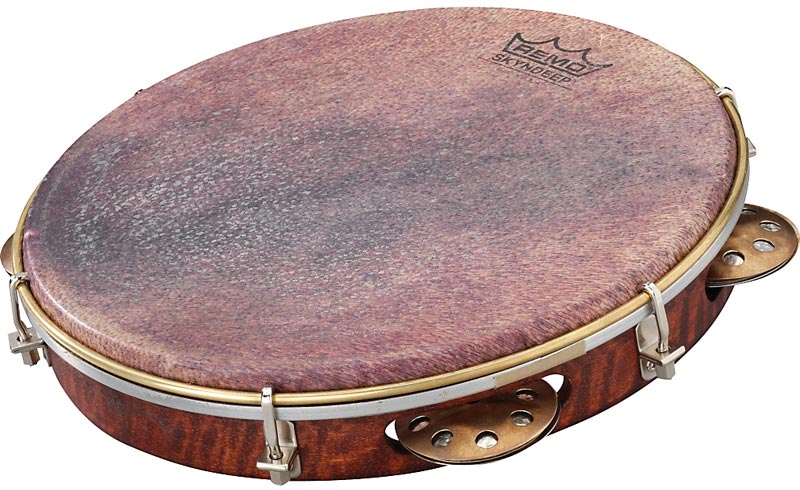
The lightweight Remo Samba Choro Pandiero has a replaceable synthetic head, and three sets of jingles; two in brass and one set in silver to produce amazingly complex sounds.
Tamborim
The tamborim is another Brazilian hand drum made of metal, plastic, or wood, with a single synthetic head. It is tuned to produce a high, sharp tone that can be controlled by the holding hand. It can be played with a wooden stick or a nylon beater, and it common in samba and bossa nova music.
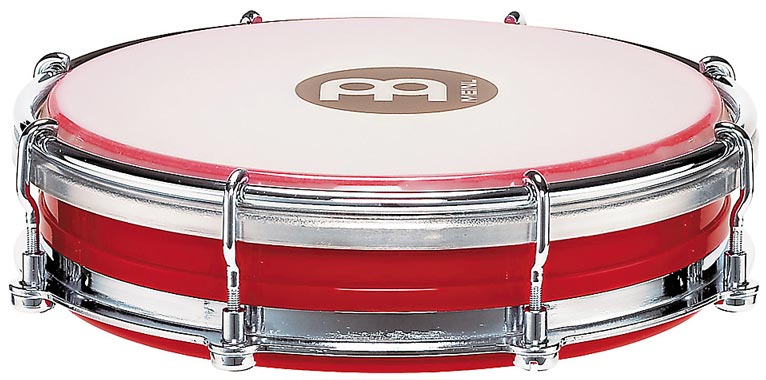
The Meinl Tamborim is built using tough ABS plastic for the body and has synthetic heads that can tuned very high for bright, sustain-free sound.
Apito or Samba Whistle
Don’t let your bateria get out of control! The loud three tone samba whistle is used to conduct and direct the band.
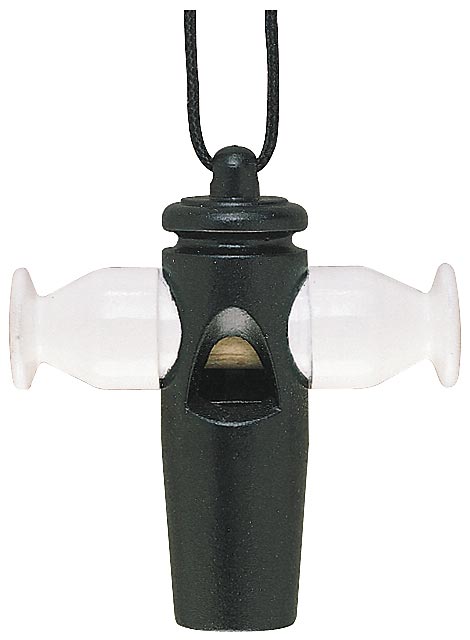
The Aspire Tri-Tone Samba Whistle has three distinct tones that complement traditional samba marching music or even EDM sounds.
Effects and Hand Percussion
Many hand-held percussion instruments are cross-cultural and used in myriad styles. These instruments are also well suited for singers, guitarists, and others who are not primarily percussionists. A simple cowbell, pair of maracas, or claves can add nice touches to your performance without any steep learning curve. All you need is little natural rhythm!
Cowbells
The cowbell is used extensively in Latin and world music. Many rock and jazz drummers add drum set cowbells to their kit. Innovative drummers such as Horacio Hernandez have incorporated the cowbell into the drum set with a foot pedal bracket that allows the bell to be played with a standard bass drum pedal.
Explore the huge selection of cowbells at Musician’s Friend.
Washboards
The washboard as a musical instrument represents true innovation in American history; likely first employed by African slaves and European immigrants using whatever was available to play music. Today, it is essential to the unique sounds of Zydeco and Cajun music.
Shakers
Shakers come in a huge variety of shapes, sizes, and styles, ranging from the tiny egg shaker to large shekeres and beaded gourds, each with a distinctive sound.
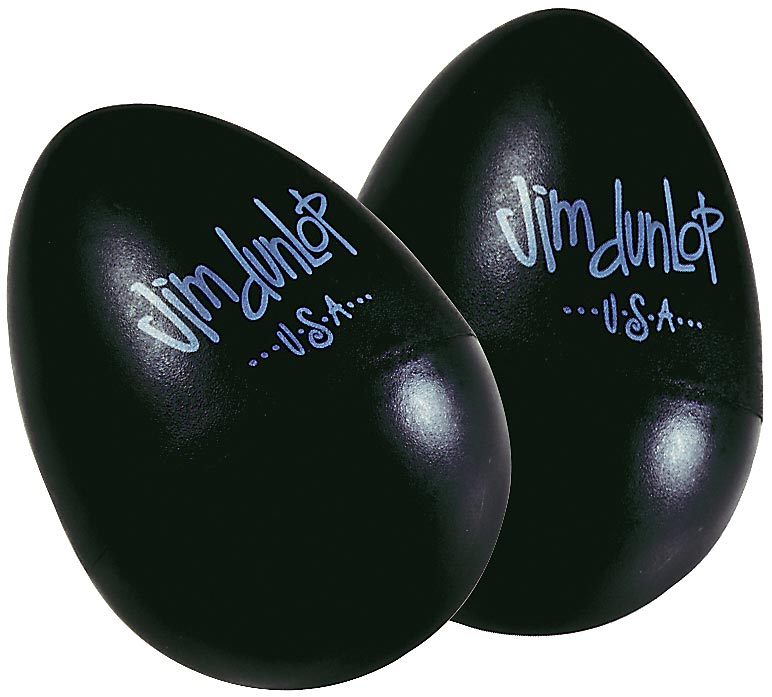
The inexpensive Dunlop 2-Pack Egg Shaker has a bright, penetrating sound that’s ideal for setting up counter rhythms and adding percussive coloration.
Explore a range of samba-related shakers at Musician's Friend.
There is a virtually unlimited array of percussion instruments for creating special effects in every musical context. Here are a few to consider in building up your percussion collection and repertoire:
- Chimes are hung vertically and are glissed with the hand to produce ethereal, evocative sounds.
- The triangle is a triangular steel bar that’s suspended from a stand or hand, and played in syncopated patterns with a metal striker. The hand holding the triangle manipulates the amount of resonance. You’ll find many models at Musician’s Friend.
- The Latin Percussion Vibraslap is a widely used rattle effect that simulates the sound of the Brazilian quejada, an instrument made with the jawbone of a donkey.
- Jam blocks are made of high-strength plastic that produce an effect similar to a woodblock, but with more durability.
- The Latin Percussion Afuche/Cabasa uses loops of steel around a textured wood and metal cylinder to simulate the scraping sounds of the shekere, the bead-covered gourd from Africa.
- The bell tree is made of numerous brass bells vertically pole-mounted that may be struck or glissed for a variety of effects.
- Tubano Drums are a new invention that are lightweight—easy to play, travel with, and store. Available in fixed and tunable versions, they come in multiple sizes.
- The Chocalho is a popular samba instrument available with various jingle configurations.
- The Caxixi is a woven rattle with a flat bottom—the softer basket and harder bottom can produce two different sounds, depending on the shaking technique. It is used in African and Brazilian music, and was thought to summon good and ward off evil.
- The Berimbau often accompanies the caxixi - this musical bow has African origins, and is a traditional accompaniment to the martial art of capoeira.
- A Shekere is a dried gourd covered with a woven net of beads or shells. It originated in Africa, but is now a frequent part of Brazilian and samba percussion.
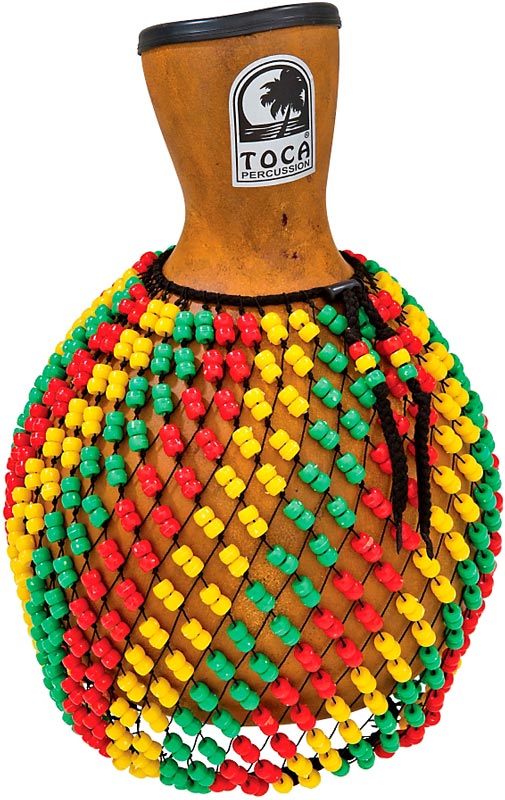
The rugged body of the Toca Fiberglass Shekere is covered with attractive hand-strung beads and produces wood-like tones.
Tuned Percussion Instruments
The primary tuned percussion instruments are the xylophone and the marimba. Both are popular in music education since they make a great introduction to both music notation and rhythms. They’re also widely used in concert and marching-band settings. The vibraphone is a cousin that has resonator tubes to increase its volume and is popular in jazz and classical music settings.
Xylophone
The xylophone is a tuned percussion instrument with metal or wood bars of various lengths. The earliest-known example of a true xylophone comes from ancient China circa 2000 BC, but the instrument is also widely-used in African music and may have been independently invented there.
The xylophone’s bars are tuned chromatically and laid out in a format that’s similar to the piano keyboard. The instrument is played with plastic-, wood-, or rubber-headed mallets. Xylophones are used in a broad spectrum of musical genres, including classical, jazz, and ethnic styles. At Musician's Friend you’ll find xylophones intended for classroom, concert, and marching band use.
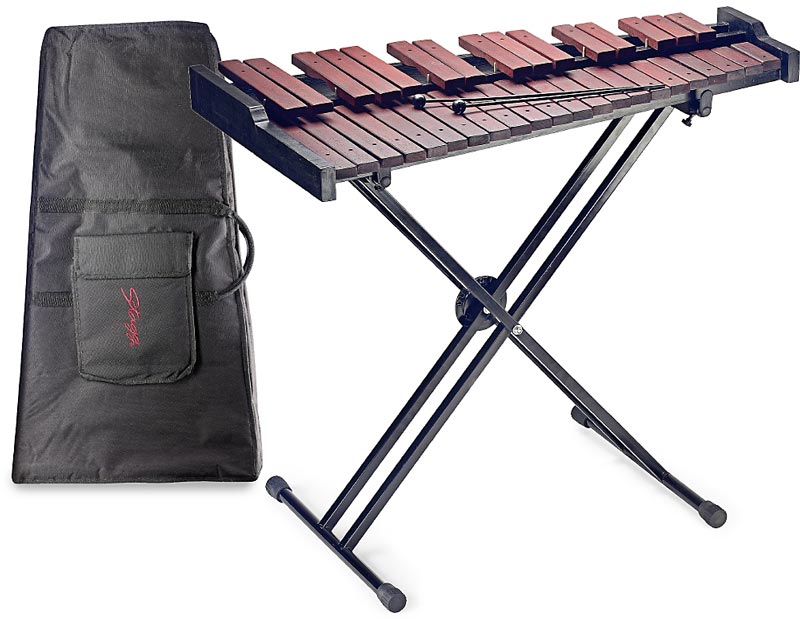
The Stagg 3 Octave Xylophone produces warm tones from its padauk wood bars.
Marimba
The marimba is pitched an octave lower than its cousin the xylophone. The bars of the marimba are traditionally made of wood, though synthetic materials are increasingly used. The bars are wider and thinner than those of the xylophone, giving the instrument a more resonant, richer tone. Various forms of the instrument were developed independently in Africa and Central America, where vibrant folk marimba playing traditions continue.
Explore a huge selection of mallet percussion at Musician’s Friend.
Drum Circles and Wellness Drumming
Finally, no article on world percussion would be complete without mention of a couple of recent related developments in the world drumming phenomenon: drum circles and wellness drumming.
A drum circle is simply a group of people gathered in a circle to make music with percussion instruments. Though drummers have doubtlessly gathered together to jam and make music together since ancient times, drum circles have developed in large numbers in western countries only since the mid-1970s.
Percussionist and teacher Arthur Hull is credited with helping to spread and provide a useful template for drum circles. Hull has conducted thousands of drum circles around the planet, both for aspiring hand drummers and rhythm fans as well as for companies such as Apple Computer, Microsoft, Sony, and Toyota. It has been found that participants in drum circles learn valuable lessons about teamwork and cooperation.
The other important trend in percussion is that of wellness drumming. Drums have traditionally been used for eons in sacred ceremonies and healing rituals. In modern times, as part of the field of music therapy and the increasing awareness of mind-body interactions in healing, drumming has again come to the forefront. Drumming has been shown to boost the immune system, to relieve stress and post-traumatic stress disorder (PTSD), and to be helpful in the treatment of symptoms of chronic diseases like Alzheimer’s and Parkinson’s, or strokes.
Many hand drums and percussion instruments are used for drum circles and wellness drumming: congas, bongos, and doumbeks being among the most popular. The djembe is particularly well-suited for these kinds of uses, with a wide range of tones and dynamics that even a novice can create quite easily.
Buffalo Drums or Hoop Drums are another popular choice for healing or wellness drumming. Native Americans created Buffalo Drums to use during performances, games, community events, spiritual communication, and healing rituals. These hand drums come in many sizes and create unique sounds.
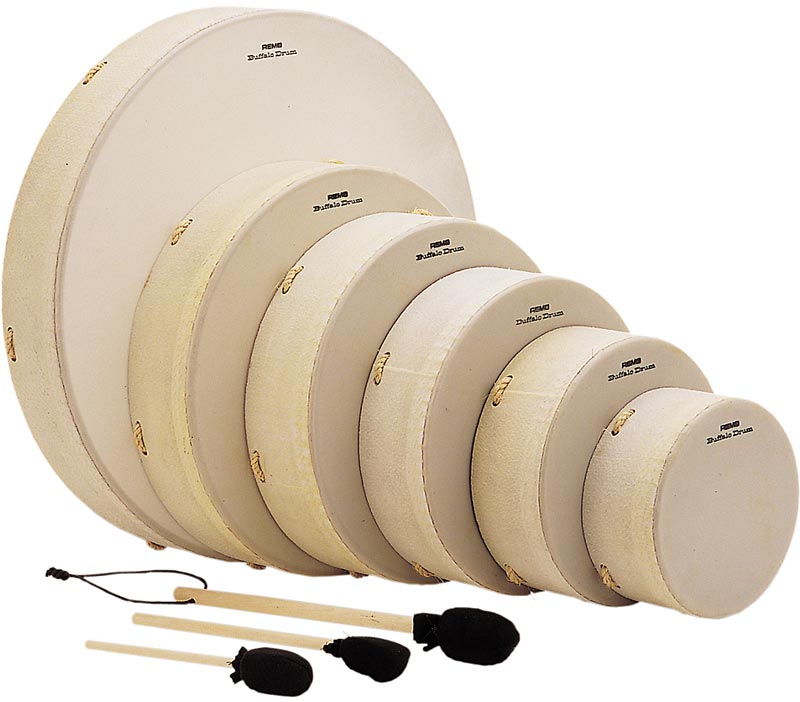
Remo Buffalo Drums are lightweight yet loud. They come in many sizes, and are easily portable to go wherever the beat may take you.
Shake Well & Enjoy
In every part of the world, keeping the beat is an essential part of making music. Percussion is a lot more than the plastic maracas and tambourines that were passed around in grade school. These tools have a rich history, and astonishing diversity. Choosing the right instrument can take you to the next level of dynamic, authentic sound.
For expert help in selecting the world percussion instruments that match your musical needs and budget, call one of our friendly Gear Heads at 877-880-5907.






































































































































